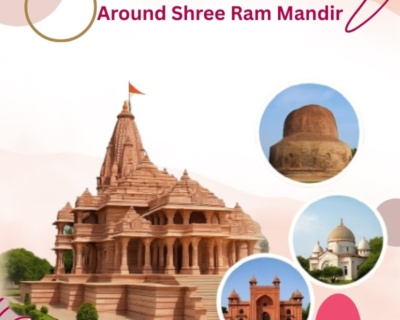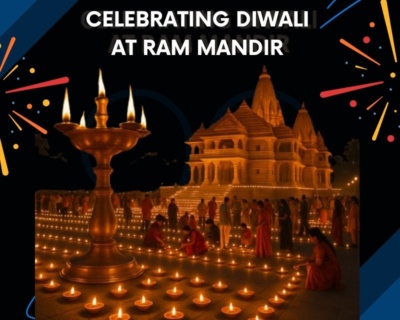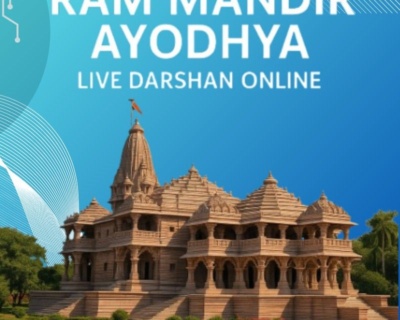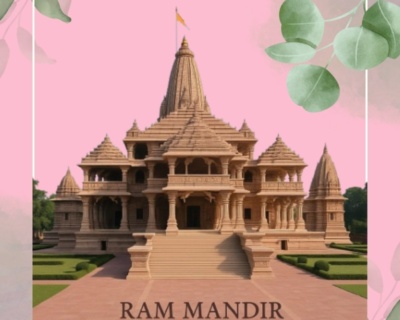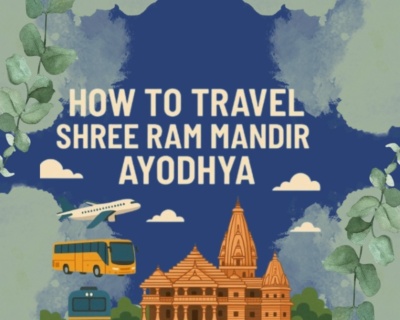Ram Mandir Ayodhya inauguration Ceremony: Key Highlights & Images
- May 23, 2025
- Uncategorized
January 22, 2024, will go down in history as one of the most emotionally charged and spiritually significant days for millions of Hindus across the world. After decades of waiting, legal battles, and unwavering devotion, the majestic Shri Ram Mandir in Ayodhya was finally inaugurated. The moment was not just about the unveiling of a temple it was about a deep-rooted cultural, spiritual, and emotional journey that spanned centuries.
From the ceremonial rituals and the magnificent temple architecture to the presence of dignitaries and nationwide celebrations, the event captured the essence of India’s spiritual heart. Here’s a comprehensive look at the key highlights and unforgettable moments from this landmark event.
A Dream Fulfilled: The Spiritual Significance
For many Hindus, Ayodhya is more than just a city it’s a sacred space deeply intertwined with the story of Lord Ram, one of the most revered deities in Hinduism. According to the epic Ramayana, Ayodhya is believed to be Lord Ram’s birthplace and the construction of a grand temple at this spot has long been a cherished aspiration.
The inauguration of the Ram Mandir represents the fulfillment of that aspiration. It signifies the return of Ram Lalla to His divine abode and is a symbol of faith, patience and perseverance. This moment united millions across the country and the diaspora in spiritual celebration.
The Pran Pratishtha Ceremony: A Once in a Lifetime Event
The heart of the inauguration was the Pran Pratishtha ceremony a sacred ritual that involved invoking life into the idol of Ram Lalla. The ceremony was led by none other than Prime Minister Narendra Modi, who observed an 11day spiritual fast before the event an act of personal devotion that set a profound tone for the proceedings.
Dressed in a traditional golden kurta and white dhoti, the Prime Minister took part in Vedic rituals, surrounded by seers, saints, and priests from all over India. The rituals were performed inside the sanctum sanctorum of the temple where the newly sculpted idol of Ram Lalla was installed.
In his emotional address after the consecration, Prime Minister Modi said, “After centuries of waiting and sacrifice Ram Lalla has finally come home.” He described the moment as the beginning of a “new era” for India, one grounded in faith, unity and cultural resurgence.
A Masterpiece of Indian Architecture
The temple itself is a stunning architectural feat. Built entirely from pink sandstone sourced from Rajasthan, the Shri Ram Mandir is a blend of tradition, craftsmanship and grandeur. With no steel or concrete used in its structure, the temple reflects the techniques and principles of ancient Indian temple architecture.
Key architectural highlights include:
- Height & Dimensions: The temple stands over 161 feet tall with three levels and five mandaps leading to the sanctum.
- Ram Lalla Idol: The main idol of Ram Lalla is a 1.3 meter tall black stone sculpture created by renowned sculptor Arun Yogiraj of Mysuru. The idol depicts a young Lord Ram standing, with a peaceful yet powerful expression.
- Pillars & Carvings: The temple features 392 intricately carved pillars and 44 doors, each adorned with symbols from Hindu mythology.
- Additional Structures: The complex also includes temples dedicated to other deities like Lord Shiva, Devi Sita, Lord Hanuman and Valmiki, among others. The Kuber Tila has been restored and a majestic statue of Jatayu has been installed nearby.
Who Attended the Ceremony?
The inauguration wasn’t just a religious ceremony it was a national event. A galaxy of prominent personalities from various fields gathered in Ayodhya to witness history being made.
Some notable attendees included:
- Cricketer Sachin Tendulkar
- Industrialists Mukesh & Nita Ambani
- Bollywood actor Amitabh Bachchan
- Spiritual leader Baba Bageshwar
- Several chief ministers, cabinet ministers, religious scholars, and saints
The presence of these dignitaries underscored the importance of the event, not only from a religious perspective but also as a moment of national pride and unity.
Celebrations Across India
While Ayodhya was the focal point, the energy and emotion of the inauguration reverberated across the country. Cities and towns were lit up with diyas, rangolis, and colorful decorations. Community halls, temples, and homes streamed the live broadcast of the ceremony, with people coming together in prayer and celebration.
In Ayodhya itself, the atmosphere was electric. Over 2500 folk artists performed on 100 stages set up throughout the city, showcasing the diverse and rich cultural traditions of India. From Ram Leela performances to traditional music, dance and devotional singing, the streets of Ayodhya came alive like never before.
Stunning Visuals from the Day
The visuals from the Ram Mandir inauguration were nothing short of awe-inspiring. Golden rays of the morning sun falling on the pink sandstone temple, the solemn yet joyous expressions of devotees, and the serene idol of Ram Lalla all came together to create a truly unforgettable spectacle.
Here are some visual highlights:
- The moment of the idol installation inside the sanctum
- PM Modi performing aarti with folded hands
- Streets of Ayodhya glowing under the light of thousands of earthen lamps
- Cultural processions with dhols, conch shells, and traditional flags
- The Jatayu statue unveiling against the temple backdrop
A Look Back: The Journey to This Day
The road to the Ram Mandir inauguration was long and filled with challenges legal, political, and emotional. The Babri Masjid-Ram Janmabhoomi dispute had been a contentious issue for decades.
In 1992, the demolition of the Babri Masjid led to widespread communal violence and marked a turning point in India’s socio-political history. What followed were years of court proceedings, commissions, and public discourse. Finally, in November 2019, the Supreme Court of India delivered a unanimous verdict in favor of building a Ram temple at the disputed site, with a separate site allocated for a mosque.
Construction began in 2020, and over the next four years, the temple took shape meticulously crafted to reflect India’s spiritual and architectural heritage.
A Symbol of Unity & Devotion
The inauguration of the Shri Ram Mandir is about more than just bricks and mortar. It’s a symbol of what can be achieved when faith, resilience, and collective vision come together. For many, it represents healing, closure, and the reclaiming of cultural identity.
At its core, the event emphasized peace, unity, and devotion, with leaders urging citizens to look beyond past divisions and embrace a shared future grounded in spiritual values.
As Prime Minister Modi aptly said in his address, “This temple is not just a structure of stone it’s a symbol of the nation’s soul.”



